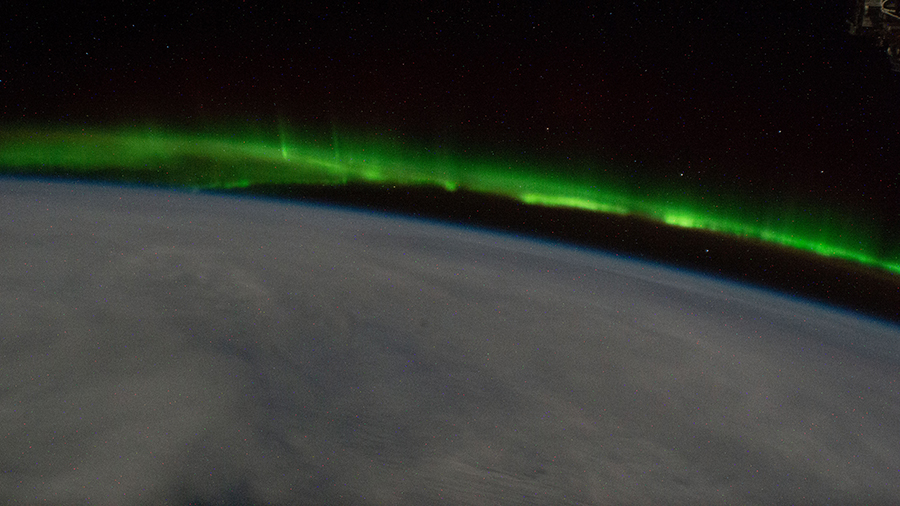
A U.S. resupply ship is being prepared for its departure from the International Space Station on Tuesday morning. Meanwhile, the Expedition 67 crew continued its space gardening and human research activities today to promote mission success and improve health on Earth.
NASA astronauts Bob Hines and Jessica Watkins spent Monday wrapping up cargo operations inside the Cygnus space freighter from Northrop Grumman. ESA (European Space Agency) Flight Engineer Samantha Cristoforetti joined the pair disconnecting power and ventilation systems and finally closing the vehicle’s hatch.
Cygnus will be detached from the Unity module overnight by the Canadarm2 robotic arm remotely controlled by engineers on the ground. The Canadarm2 will maneuver Cygnus away from the station and release the cargo craft at 6:05 a.m. EDT completing a four-month stay at the orbital lab. NASA TV starts its live Cygnus release coverage at 5:45 a.m. on Tuesday on the agency’s app and its website.
Hines finished his work day servicing oxygen components on a U.S. spacesuit. Watkins and Cristoforetti also partnered together and filmed station operations to train future crews preparing for upcoming missions to the orbiting complex. Watkins later setup camera gear that students on Earth can operate remotely and photograph landmarks on the ground. Finally, Cristoforetti swapped batteries inside the Astrobee robotic free-flyers and worked on NanoRacks Bishop airlock maintenance.
Advanced space research is always ongoing amidst the constant array of visiting vehicles and other mission activities taking place at the orbital lab. Monday’s science experiments mainly focused on growing plants without soil, cardiac research, and Earth observations.
NASA Flight Engineer Kjell Lindgren kicked off another plant growing session for the XROOTS space botany study. He set up seed cartridges and root modules for the experiment to demonstrate using hydroponic and aeroponic techniques to grow edible plants in microgravity. Growing crops in space can reduce costly cargo missions and help sustain crews as NASA and its international partners plan missions to the Moon, Mars, and beyond.
Roscosmos cosmonauts Denis Matveev and Sergey Korsakov worked on cardiac research today exploring how the human circulatory system adapts to weightlessness. Matveev later worked on nanosatellites to be deployed on an upcoming Russian spacewalk. Korsakov also conducted ear, nose, and throat research. Commander Oleg Artemyev worked on Russian maintenance activities and later filmed station operations for audiences on Earth.
Learn more about station activities by following the space station blog, @space_station and @ISS_Research on Twitter, as well as the ISS Facebook and ISS Instagram accounts.
Get weekly video highlights at: http://jscfeatures.jsc.nasa.gov/videoupdate/
Get the latest from NASA delivered every week. Subscribe here: www.nasa.gov/subscribe
